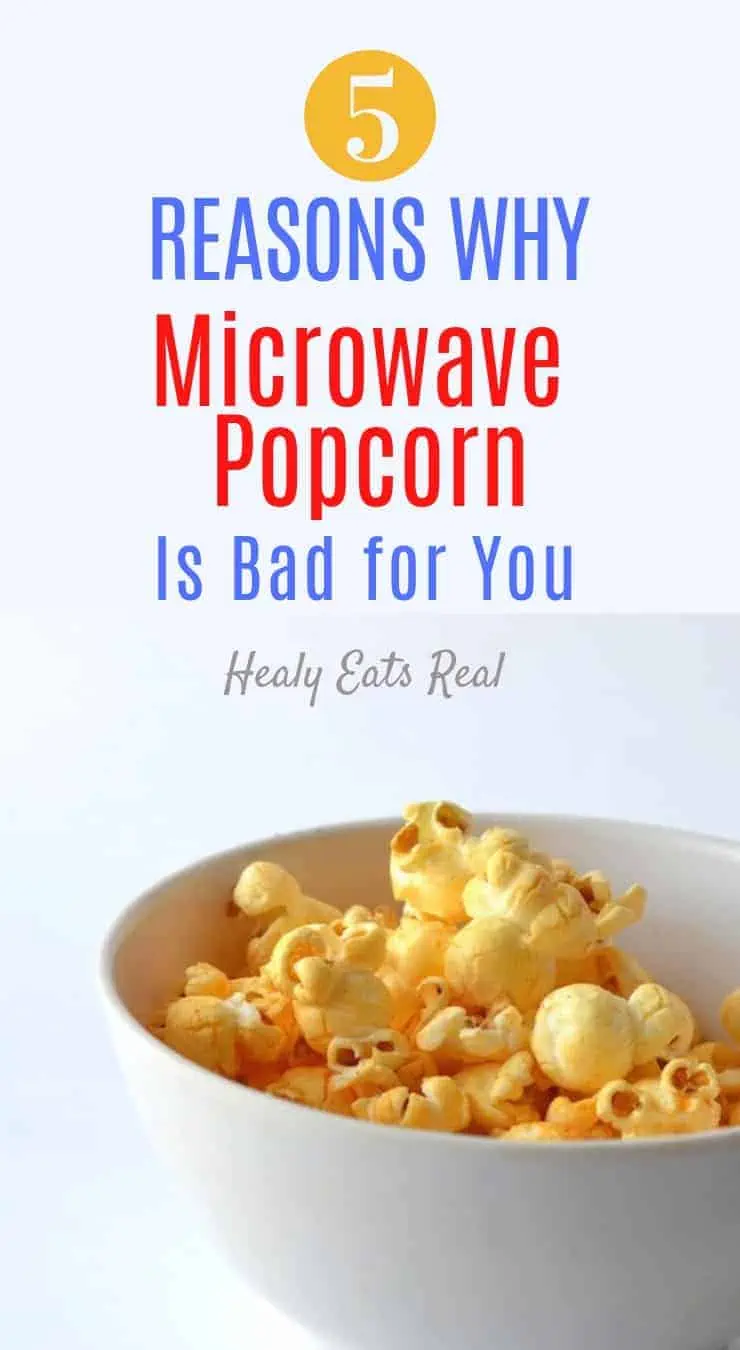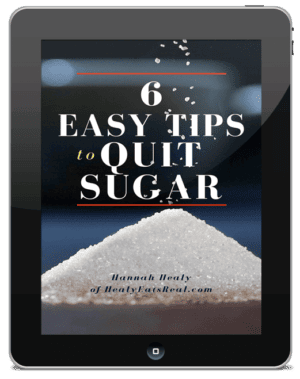Is Microwave Popcorn Bad for You? 5 Reasons to Avoid It
This post may contain affiliate links. As an Amazon Associate I earn from qualifying purchases. Please read the disclosure policy.
Is microwave popcorn bad for you? If your health is important to you, you may want to think twice before consuming it regularly; Below are a few reasons why.

Most people enjoy a nice bowl of popcorn when sitting down for a movie, but when you know how some of the ingredients might affect you, you may want to avoid it. Don’t worry though, there are healthier ways to enjoy popcorn!
5 Reasons to Avoid Microwave Popcorn:
1. Popcorn Lung (bronchiolitis obliterans)
The lung problems associated with the artificial butter flavoring (diacetyl) has afflicted enough people to even garner it’s own disease name– it’s called “popcorn lung” or bronchiolitis obliterans.
Unfortunately, this disease is irreversible and can cause lung inflammation, scarring and even restricted airflow resulting in breathing trouble. In extreme cases it can become life-threatening.
According to the Centers for Disease Control, at least 8 factory workers in Missouri, who worked in popcorn factories developed this lung disease. Reports of popcorn lung from additional factories were revealed later.

2. Artificial Butter Flavoring (Diacetyl)
Most popcorn brands use an artificial butter flavoring in their microwave popcorn called diacetyl.
Certain studies found severe lung and respiratory issues connected to diacetyl, so much so that The Occupational Safety and Health Administration now recommends controlling exposure to protect factory workers who work around diacetyl.
However, factory workers are not the only ones at risk for bronchiolitis obliterans (popcorn lung). When a bag of microwave popcorn is heated, this causes the chemical diacetyl to vaporize, thus allowing consumers to breath in the chemical.
Dr. Cecile Rose, a leading lung expert concluded that microwave popcorn was the reason for her patient’s lung disease.
In 2012, a Colorado man won a lawsuit against 3 microwave popcorn companies for damages caused by bronchiolitis obliterans contracted from regularly consuming microwave popcorn.
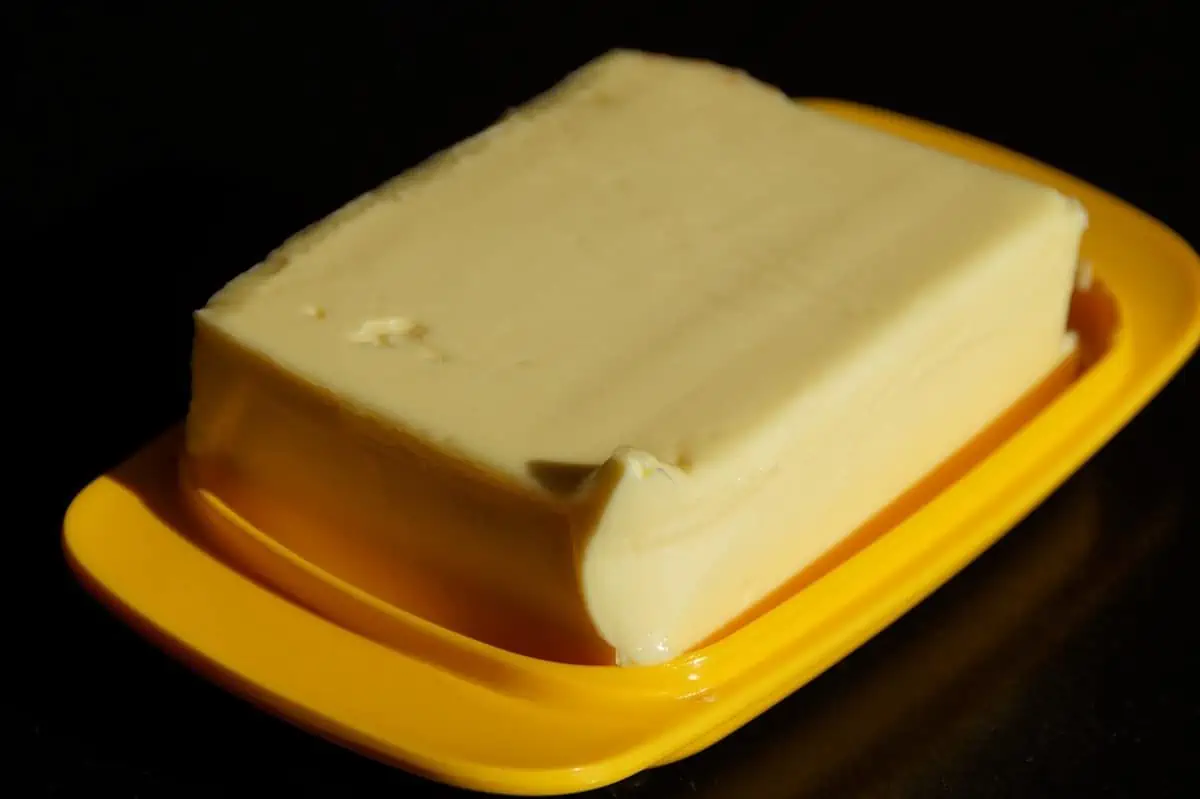
3. Perfluorinated Compounds (PFCs) in The Bag
One of the worst things about microwave popcorn are the chemicals in the bag that it comes in.
The main offenders are perfluorinated compounds (PFCs) which are added to the inside of the microwave popcorn bag to keep grease from seeping through. PFCs break down into perfluorooctanoic acid (PFOC), a known carcinogen and has been linked to cancer according a 2017 United States Environmental Protection Agency report.

4. Preservatives
Many brands of microwave popcorn use preservatives that are linked to certain health issues.
One commonly used preservative in microwave popcorn is TBHQ (tert-butylhydroquinone) to prevent food from going rancid to extend the shelf life. TBHQ is often used with butylated hydroxyanisole (BHA) and has a very similar chemical makeup.
Although no general consensus has been made on whether these compounds are completely safe or not, there have been some studies showing the potential risks of these additives.
According the the National Library of Medicine there are possible links to vision, lung and behavioral effects from TBHQ.
5. Bad Oils
Many microwave popcorn brands have hydrogenated oils which are a type of trans fat that are dangerous for your health… especially your heart and cholesterol.
Apart from that, even if the popcorn doesn’t have hydrogenated oil, it is likely to have soybean oil or canola oil in it, which is believed to contribute to inflammation and a host of other issues. Learn more about why these oils should be avoided here.
The healthiest oils to use with popcorn is avocado oil, coconut oil or ghee. Learn more about the healthiest cooking oils to use here.
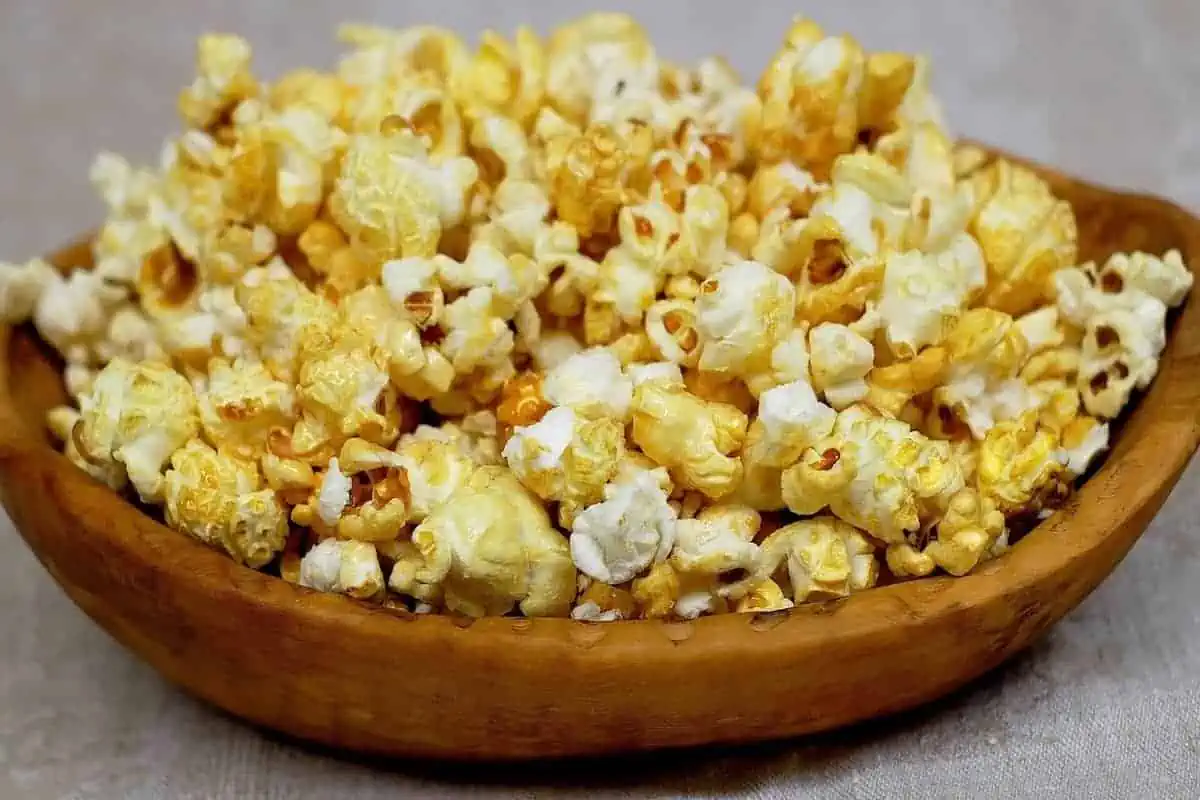
Can you get microwave popcorn without chemicals?
Although there are a few brands of microwave popcorn that advertise that they’re free from PFOA liners in the bag, unfortunately with most store-bought shelf-stable microwave popcorn, you need some type of lining on the bag to keep the oil from seeping through.
So even though many companies avoid PFOA liners, they replace it with another kind of liner that may be just as bad for your health, but isn’t as well researched yet.
Luckily, there are several simple and easy alternatives to popcorn without having to get the microwavable kind.
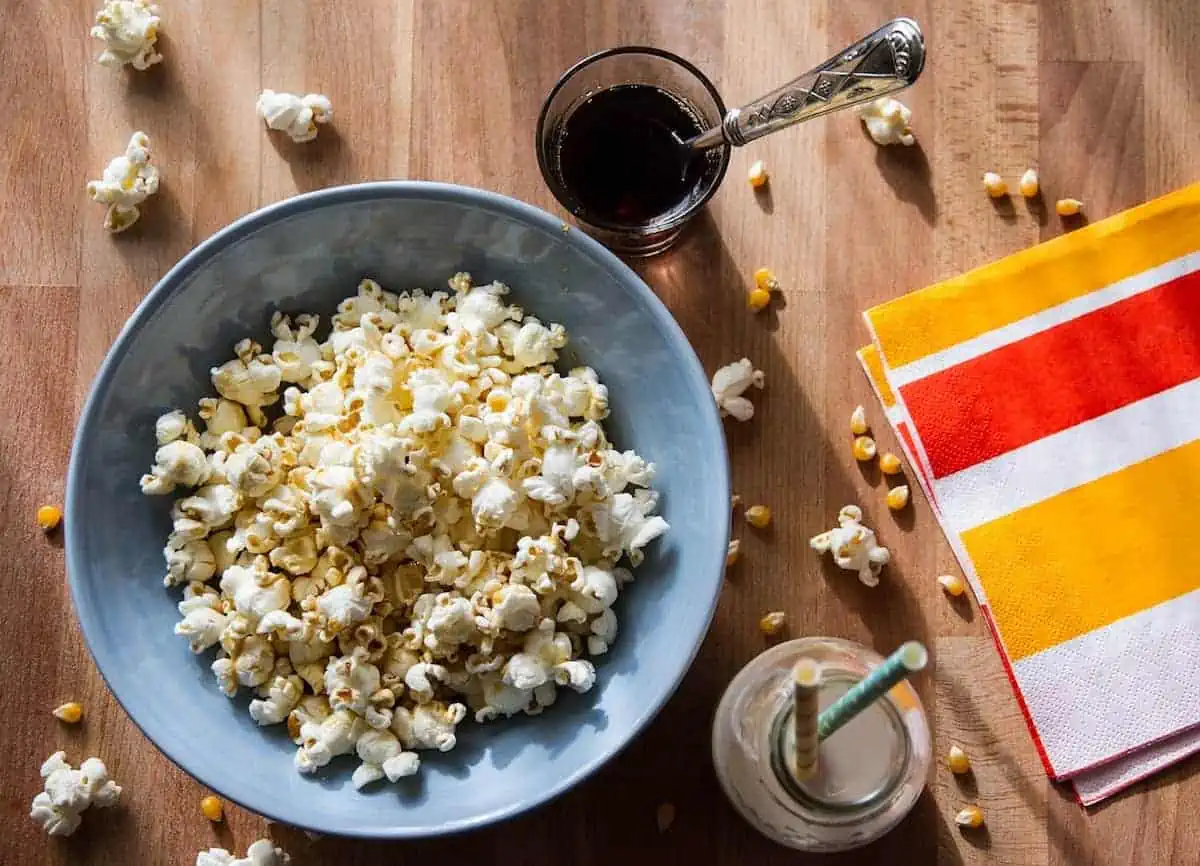
What kind of popcorn is the healthiest?
There are a few different easy ways to make healthy popcorn so you can avoid the microwavable packaged kind….
- Make stove-top popcorn in a pot (See recipe below!)
- This is a simple 5-minute process that only involves popcorn kernels, oil and a pot!
- Buy already-bagged popcorn
- Many grocery stores and online retailers offer already-popped popcorn in a bag like chips. This is a great choice as long as the oils used are healthy and there aren’t many additional ingredients beyond sea salt or healthy spices/flavorings. Don’t forget to check the ingredients label to confirm!
- Trader joe’s has an olive oil bagged popcorn
- Whole foods has a coconut oil bagged popcorn
- Amazon has some healthy options for bagged popcorn like this one which is made with avocado oil, coconut oil and Himalayan salt.
- Many grocery stores and online retailers offer already-popped popcorn in a bag like chips. This is a great choice as long as the oils used are healthy and there aren’t many additional ingredients beyond sea salt or healthy spices/flavorings. Don’t forget to check the ingredients label to confirm!
- Make air popped popcorn
- With this option you’ll need an air popper like this, but this way will allow you to make popcorn without any oil at all.
- Make your own microwave popcorn in brown paper bags
- If you’re really attached to microwave popcorn, you can make it using brown paper bags. You simply add popcorn kernels to a brown paper bag, add a little oil over the kernels if you want, fold the top of the paper bag over a few times, then microwave. Get more detailed instructions here or see video below…

How to make stovetop popcorn in 5 minutes
For this size of popcorn you’ll need a medium sized pot (around 5 quart size) with a fitting lid to leave enough room for the popcorn. Start by putting about 1-2 tablespoons of refined coconut oil, ghee or avocado oil in the pot. Melt it over medium to medium-high heat.
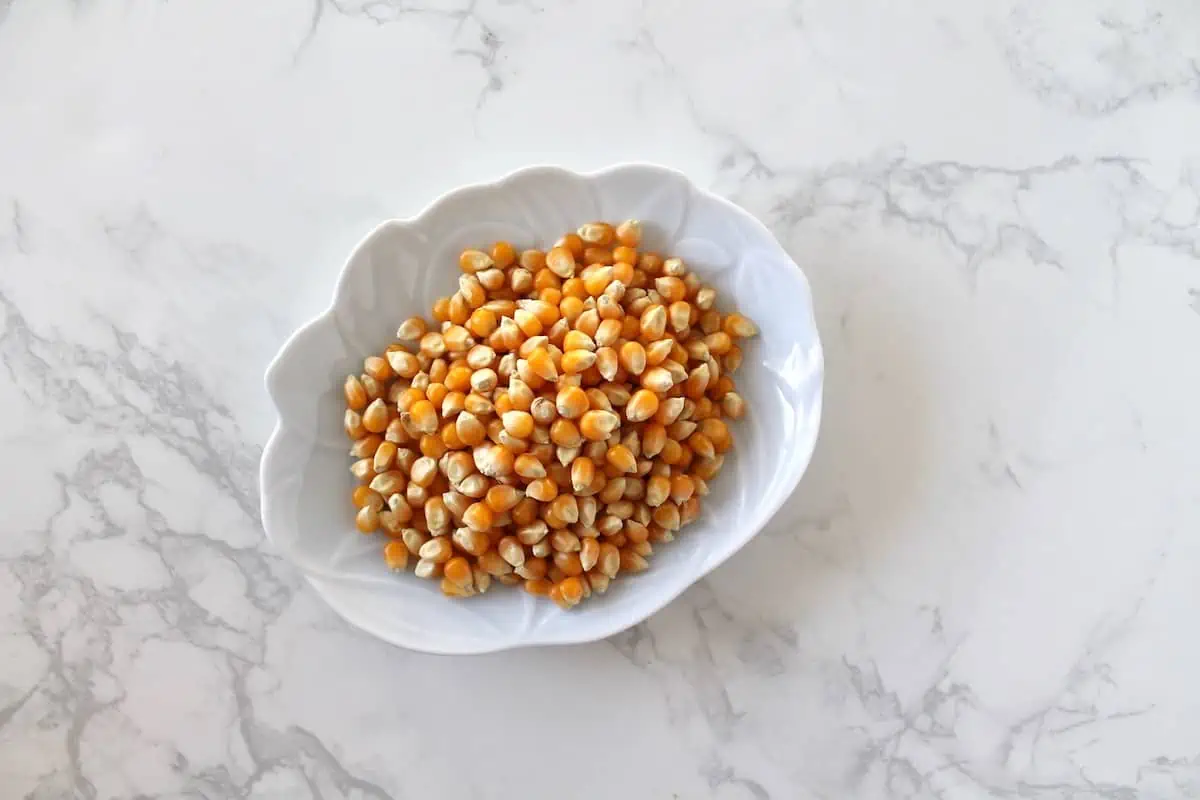
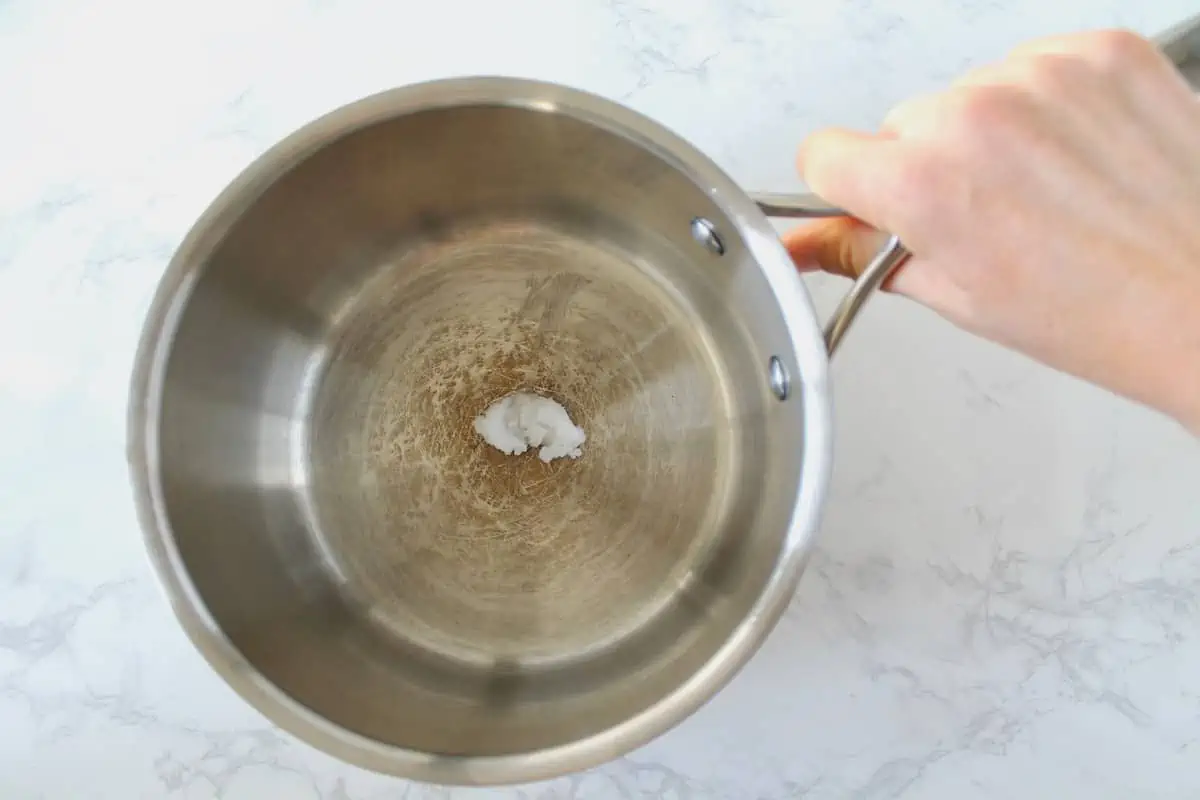
Add 1/4 cup of popcorn kernels to the pot, stir the kernels around a little bit to cover them with the oil and cover the pot with the lid.
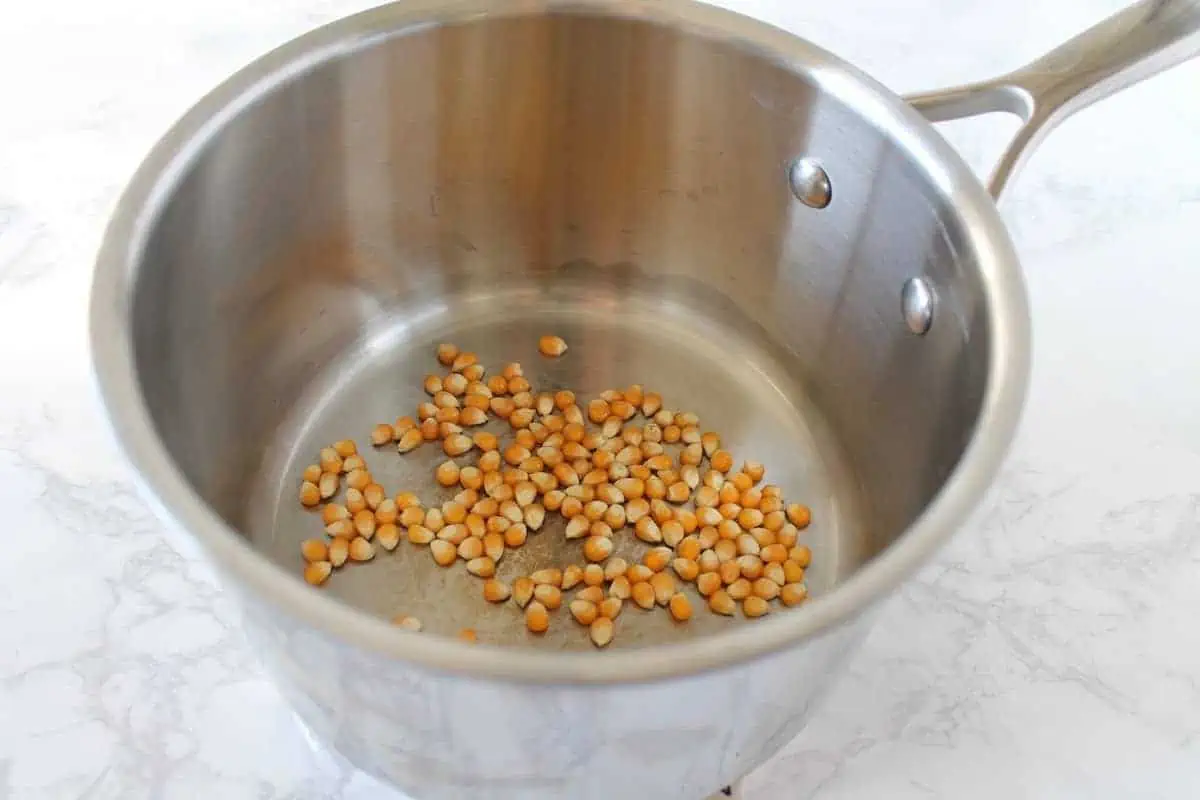
It will take a couple minutes for it to heat up and start popping the kernels. Once they start popping you’ll hear it. Holding the lid firmly on the pot rock the pot back and forth to help bring any unpopped kernels to the bottom of the pot. Once the popping begins to subside and the time between popping sounds begins to get longer, turn off the heat and let sit for about 15 seconds to wait for any straggling popping kernels.
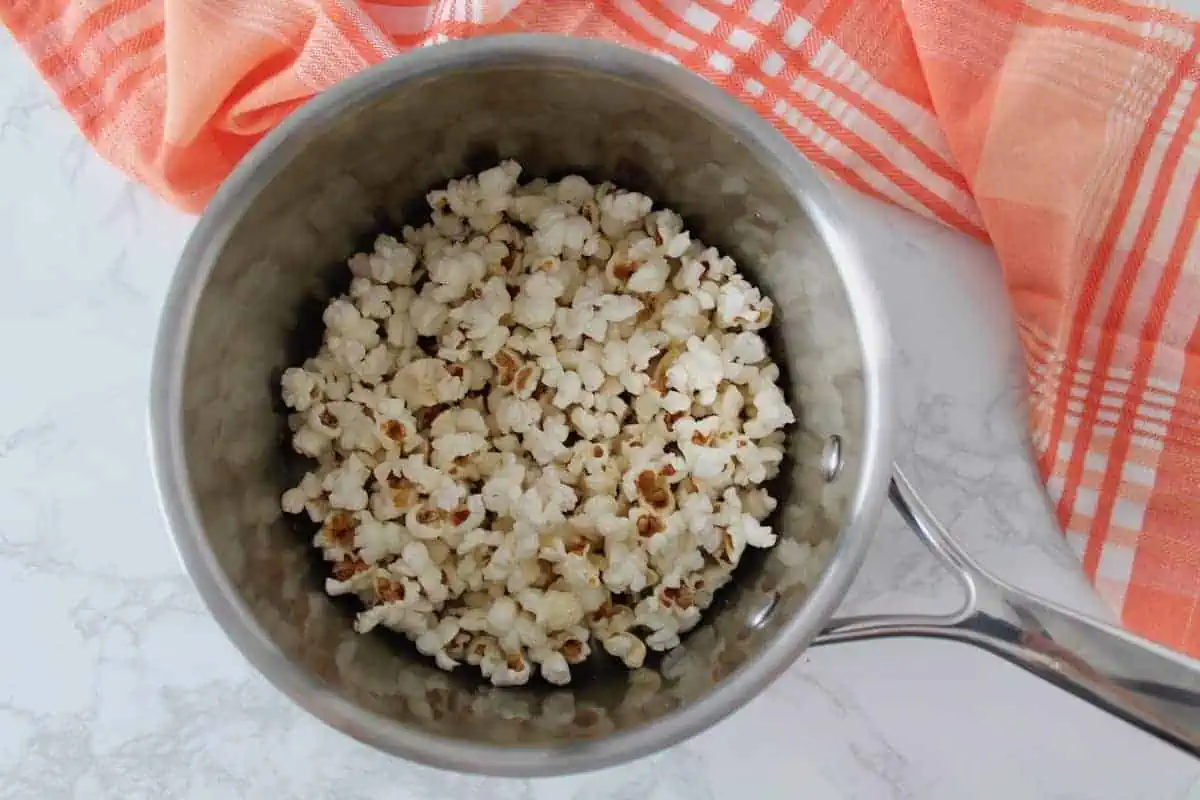
Remove from the heat and remove the lid. At this point you can add more oil if you want or leave it as is. Melted ghee is a great choice because it’s healthy and tastes just like movie theater butter. If you add it drizzle it over the popcorn in the pot, then quickly return the lid and shake it to evenly distribute, then add sea salt over it and shake again to distribute.
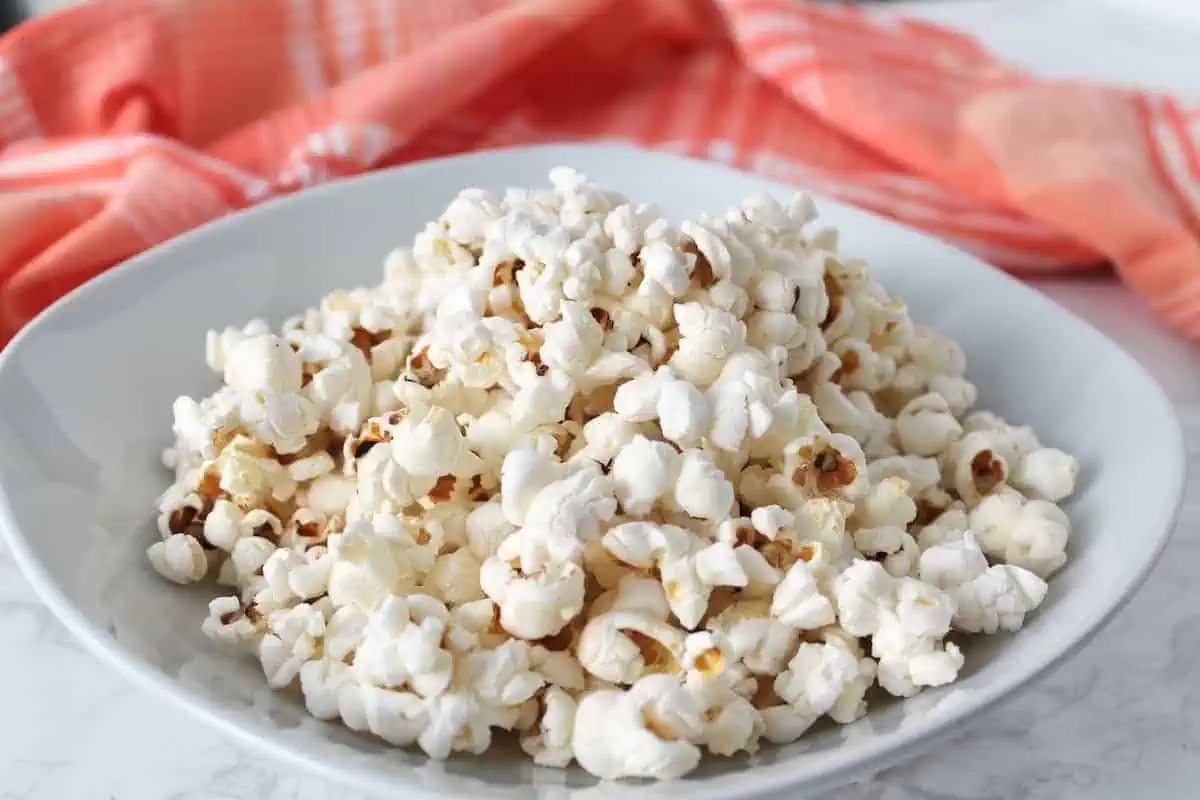
Pour your finished popcorn into a bowl and enjoy!

How to Make Stovetop Popcorn
EQUIPMENT
- 5 Quart Pot
Ingredients
- 1-2 tbsp oil (refined coconut oil, avocado oil or ghee)
- 1/4 cup popcorn kernels
- 1-2 tsp sea salt
Instructions
- For this size of popcorn you'll need a medium sized pot (around 5 quart size) with a fitting lid to leave enough room for the popcorn. Start by putting about 1-2 tablespoons of refined coconut oil, ghee or avocado oil in the pot. Melt it over medium to medium-high heat.
- Add 1/4 cup of popcorn kernels to the pot, stir the kernels around a little bit to cover them with the oil and cover the pot with the lid.
- It will take a couple minutes for it to heat up and start popping the kernels. Once they start popping you'll hear it. Holding the lid firmly on the pot rock the pot back and forth to help bring any unpopped kernels to the bottom of the pot. Once the popping begins to subside and the time between popping sounds begins to get longer, turn off the heat and let sit for about 15 seconds to wait for any straggling popping kernels.
- Remove from the heat and remove the lid. At this point you can add more oil if you want or leave it as is. Melted ghee is a great choice because it's healthy and tastes just like movie theater butter. If you add it drizzle it over the popcorn in the pot, then quickly return the lid and shake it to evenly distribute, then add sea salt over it and shake again to distribute.
- Pour your finished popcorn into a bowl and enjoy!
Notes
- I like to use refined coconut oil for this recipe because it doesn’t have any coconut flavor which is great for savory popcorn. If you want to make a sweeter popcorn like kettle corn then regular coconut oil might be a nice touch. Avocado oil or ghee are also great oil options.
- If you double this recipe or increase it for more servings, make sure you also adjust the pot size and make it a bigger pot. You’ll need enough room to accommodate the popped popcorn. You also want to make sure there is just one layer of kernels on the bottom of the pot (no overlapping or stacked kernels).
- You’ll also want to use more oil if you are increasing the recipe size.
Nutrition
This article was originally posted in December of 2013, but has been republished in February of 2019 to include updated sources and images.
